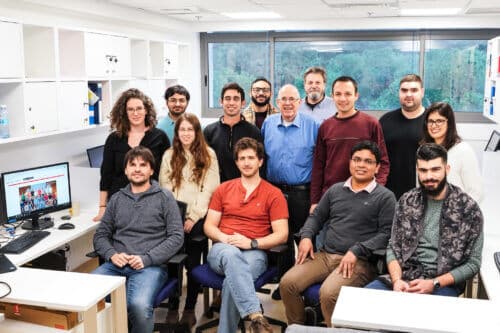"The attempt to perform calculations in the memory unit is not completely new," explains Prof. Shahar Kotinsky, "but its technological implementation is very complex and challenging. This is partly due to the different physical properties between the computational components in the processor (transistors) and the various storage components that exist today in computer memories. So far, they have managed with great difficulty to perform calculations close to the storage units, thus reducing the cost of transferring information between the units. Attempts have also been made to use the memory cells for calculation, but most of the time it is a limited calculation that differs in essence from the digital calculation that is performed in the processor."

Researchers at the Viterbi Faculty of Electrical Engineering at the Technion present a breakthrough in the use of computer memory to perform computational operations. The research published in IEEE Transactions on Electron Devices was led by Prof. Shahar Kutinsky (Kvatinsky) and M.Sc. Barak Hopper, in collaboration with the research group of Prof. Rainer Wasser from the Jülich Research Center and the researchers Dr. Vics Rana and Dr. Stefan Menzel.
According to Prof. Kotinsky, the basic structure of the computer has hardly changed since the first computers were built in the 40s. "The classic computer we know is built from two central units - the processor that performs calculations and the memory that stores the information. In these two units, there was a meteoric improvement in the following decades - the calculation rate of the processors increased significantly and the storage volume in the memory units also increased dramatically - but the communication between them became a bottleneck that limits the calculation rate of the entire computer. This is because the transfer of information from the processor to the memory and back is significantly slower than the calculation itself and even consumes a lot of energy."
In recent years, Prof. Kotinsky has been focusing on several avenues for solving the problem of separating memory from the processor, and the present article demonstrates how it is possible to perform, using the memory units themselves, digital calculations similar to those performed by the processor. This is with the understanding that if the calculation and storage are performed by the same unit, those "traffic jams" created in the transition between the processor and the memory will disappear.
"The attempt to perform calculations in the memory unit is not completely new," explains Prof. Kotinsky, "but its technological implementation is very complex and challenging. This is partly due to the different physical properties between the computational components in the processor (transistors) and the various storage components that exist today in computer memories. So far, they have managed with great difficulty to perform calculations close to the storage units, thus reducing the cost of transferring information between the units. Attempts have also been made to use the memory cells for calculation, but most of the time it is a limited calculation that differs in essence from the digital calculation that is performed in the processor."
The Technion researchers present in the article a successful implementation of three logic gates inside the memory unit produced by the partners from Jülich, and even demonstrate how numbers can be connected inside the memory. In addition, they show in the article the feasibility of more complex logical components. According to Prof. Kotinsky, this is a significant milestone towards the development of memories with significant computational capabilities. "For about a decade now, we have been developing a theory and demonstrating in computer simulations how the logic gates we designed will perform logical calculations in a manner similar to that in a processor. This is the first work that demonstrates this method on memory components manufactured and measured in a laboratory, transferring the method from theory to practice, and all this while overcoming the problems that exist in the real world."
The research was conducted with the support of the European Research Commission (ERC Starting Grant) and the National Science Foundation.
More of the topic in Hayadan:
- An Israeli-international team is developing a quantum computer funded by the QuantERA Foundation
- Researchers at the Technion and the Tower Jazz company have developed a technology that adapts commercial transistors to the age of artificial intelligence
- Technion researchers have developed a platform that accelerates the learning process of artificial intelligence systems 1,000 times

2 תגובות
Collaborate with the graphene group, maybe you will create a connection from graphene in the magic corner and hope everything works out.
It is indeed time to rethink the very sharp separation between storing information and acting on information. In living beings there is no such sharp separation and it is worth learning from evolution which had enough time to reach the most economical processes.